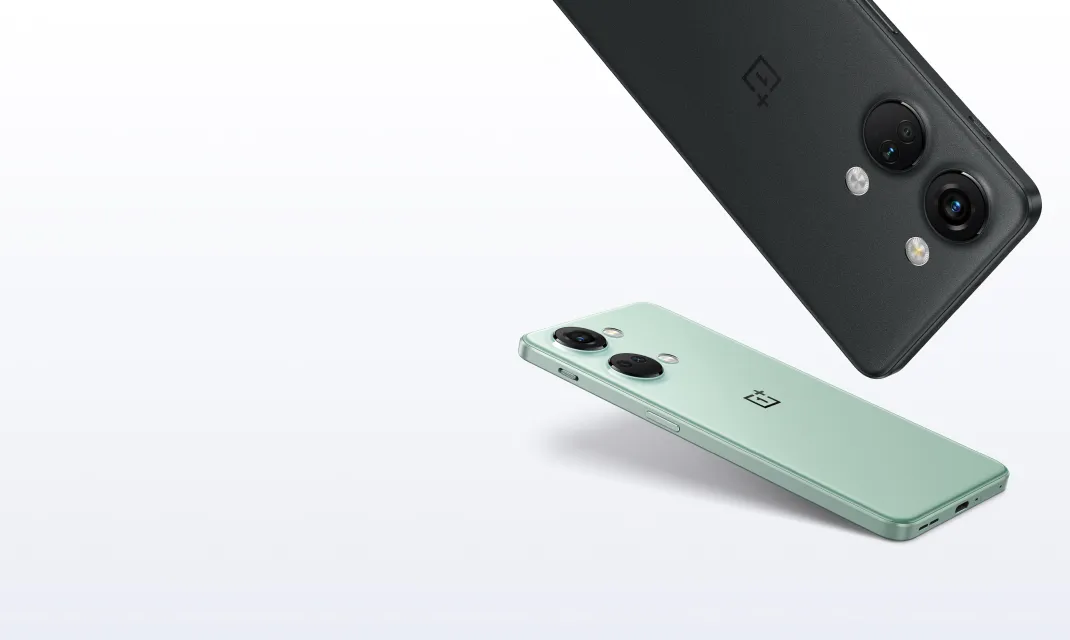OnePlus has introduced the latest addition to its immensely popular Nord series, the OnePlus Nord 3 5G. The mid-range smartphone boasts the formidable MediaTek Dimensity 9000 chipset, a remarkable feature that sets it apart from its predecessors within the OnePlus Nord Series. Notably, this smartphone also stands out with its unprecedented 16GB RAM capacity, a pioneering advancement in the Nord lineup.
In terms of display, the OnePlus Nord 3 captivates users with its vibrant 120Hz screen, coupled with an impressive IMX890 sensor. Additionally, the device showcases an exceptional camera system and a robust processor, solidifying its status as a top-tier offering. Moreover, the phone incorporates a spacious 6.74-inch AMOLED screen, fortified with the renowned Gorilla Glass 5 for optimal protection.
Distinguished by its sleek glass back, the OnePlus Nord 3 emanates an aura of premium elegance, further enhanced by its captivating colour options, Misty Green and Tempest Grey. With a price tag of Rs 33,999, this remarkable smartphone will become available for purchase starting from the 15th of July.
Among its notable features, the OnePlus Nord 3 proudly retains the iconic Alert Slider, an indispensable tool for seamlessly transitioning the device between normal, vibrate, and silent modes. At the rear, users can relish the triple camera setup, consisting of a remarkable 50MP Sony IMX890 primary sensor, complemented by an 8MP ultrawide lens and a 2MP macro sensor.
OnePlus assures customers that the Nord 3 will receive a commendable 3 years of Android updates and 4 years of security patches, ensuring its longevity in the ever-evolving technological landscape. Furthermore, the device encompasses a formidable 5000 mAh battery, fortified by the rapid 80W SUPERVOOC charging capability.
Boldly asserting that the OnePlus Nord 3 houses the best-ever camera sensor among all Nord smartphones, OnePlus highlights the device’s exceptional 50MP sensor, complete with optical image stabilization for sharper and more detailed photographs. Leveraging the in-house TurboRAW algorithm, users can expect extraordinary image quality even in challenging low-light scenarios.
In addition to the outstanding primary sensor, the OnePlus Nord 3 features an 8MP 112-degree ultra-wide camera, perfectly suited for capturing breathtaking landscapes and cityscapes. Notably, the device supports video recording at 4K resolution and 60 frames per second, supplemented by AI Noise Reduction algorithms that enhance the quality of captured videos.
OnePlus Nord CE 3
Furthermore, OnePlus unveiled the third iteration of its OnePlus Nord CE, the Nord CE 3, which boasts a Qualcomm 782G Processor alongside a maximum RAM capacity of 12GB. Accompanied by a substantial 5000 mAh battery and 80W SUPERVOOC charging, the Nord CE 3 promises to endure a full day with a mere 15 minutes of charging. While the company has not disclosed extensive details, it did mention in the official release that the device will be available for purchase in August.
OnePlus Nord Buds 2r
Completing its impressive lineup, OnePlus presented the OnePlus Nord Buds 2r, a True Wireless Stereo (TWS) device featuring 12.4mm Extra Large Drivers, Dolby Atmos support, Dual Mics, and an AI Clear Call Algorithm, among other advanced features. Boasting the largest drivers in its category, the OnePlus Nord Buds 2r enables listeners to discern finer audio nuances, particularly in genres such as Electronic, Hip Hop, and Rock.
